At CarnivoreWeb.com, we independently review products and outfitters. However, we may earn a commission when you purchase products through links on our site. Read our affiliate policy. Read about how we test products.
Don’t Throw Those Bones Away.
It was around 2006 when I was sitting in a pricey restaurant trying a tasting menu. The chef was so bold he served just a simple broth in a bowl. Looking down at the meatless meal, I was sure I’d starve. Little did I know I was about to fall in love with a new element of cooking and that the experience would lead me to look at wild game in a whole new light.
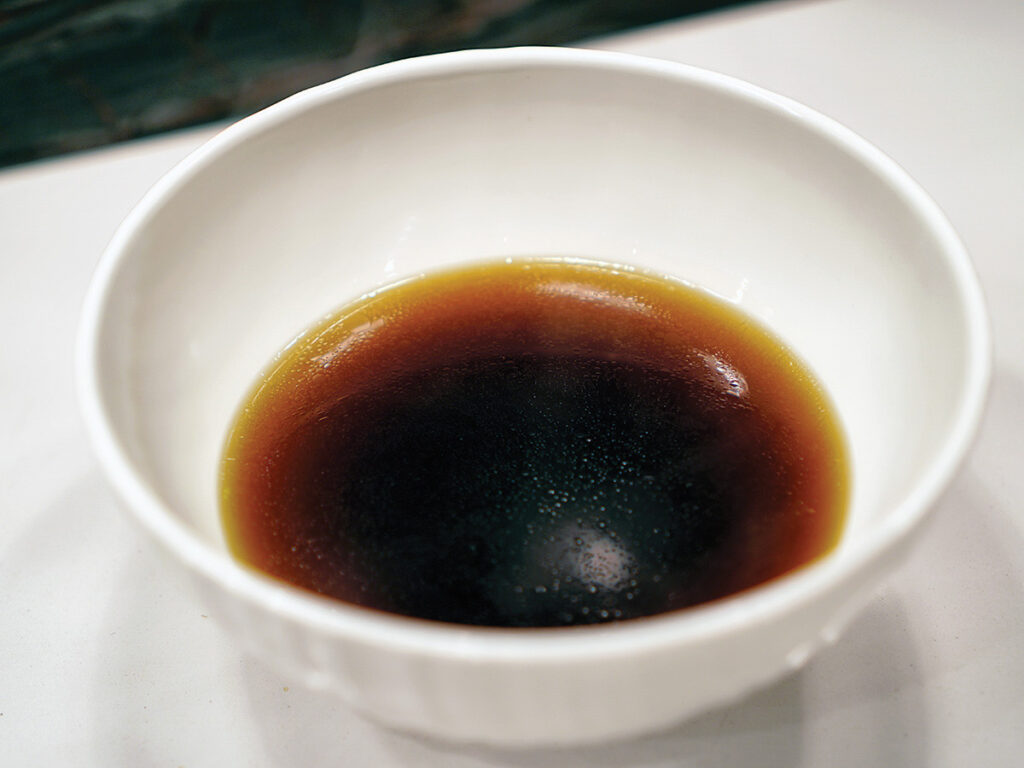
The carcasses of the animals I hunt are a treasure trove of bones, cartilage, and sinew; all of which are packed with flavor and nutrients. Broth and stock offer myriad nutritional benefits and serve as the cornerstone of great cooking. Every great cuisine has an element of stock and broth in it. There’s also a historical reverence that I can’t ignore, which cuts to the core of human existence. The bones of harvested animals have been used for tools, instruments, ceremonial objects, and relics since man brought down his first animal.
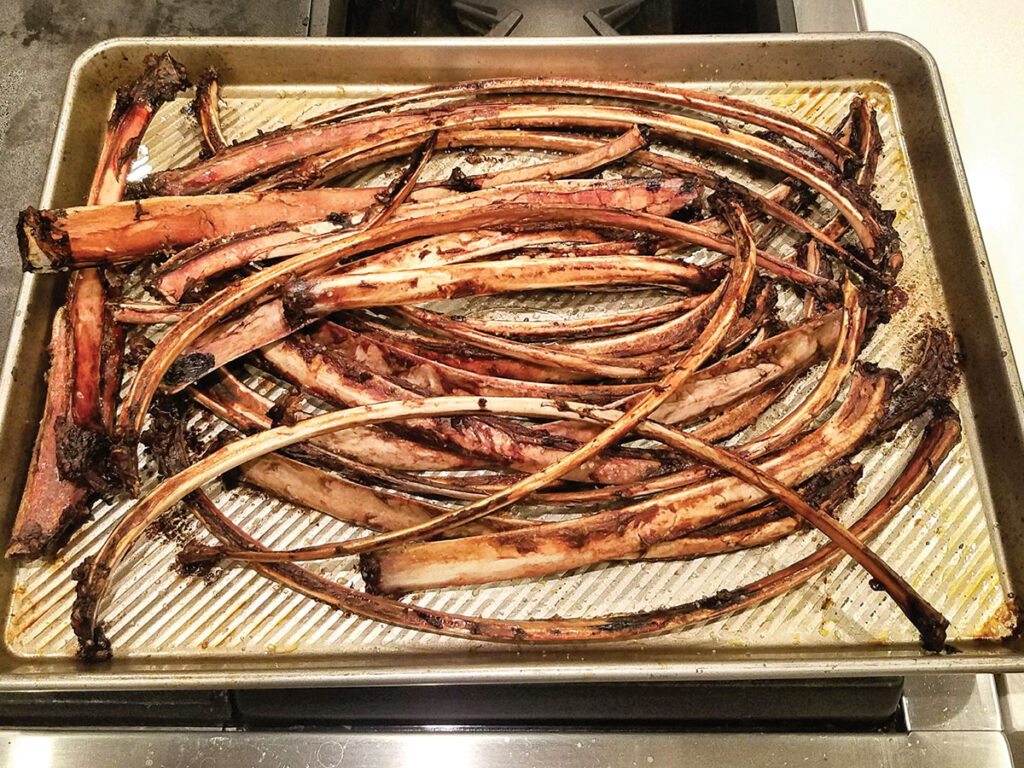
Now, I cry a little bit inside when I find out someone has left the bones of an animal in the field. OK, so that might be an exaggeration, but seriously, we should all make an effort to bring the bones from our hunt to the freezer. While nothing left in the field is truly wasted, as scavengers benefit from what we leave behind, the bones are an integral part of my waste nothing ethic. To me, the bones are just as important as the backstraps. You’ve all probably had stock before, and one of the most common is from a chicken or turkey carcass after the whole bird has been roasted. I’d like to imagine everyone’s grandmother made them chicken soup from a carcass at one time.
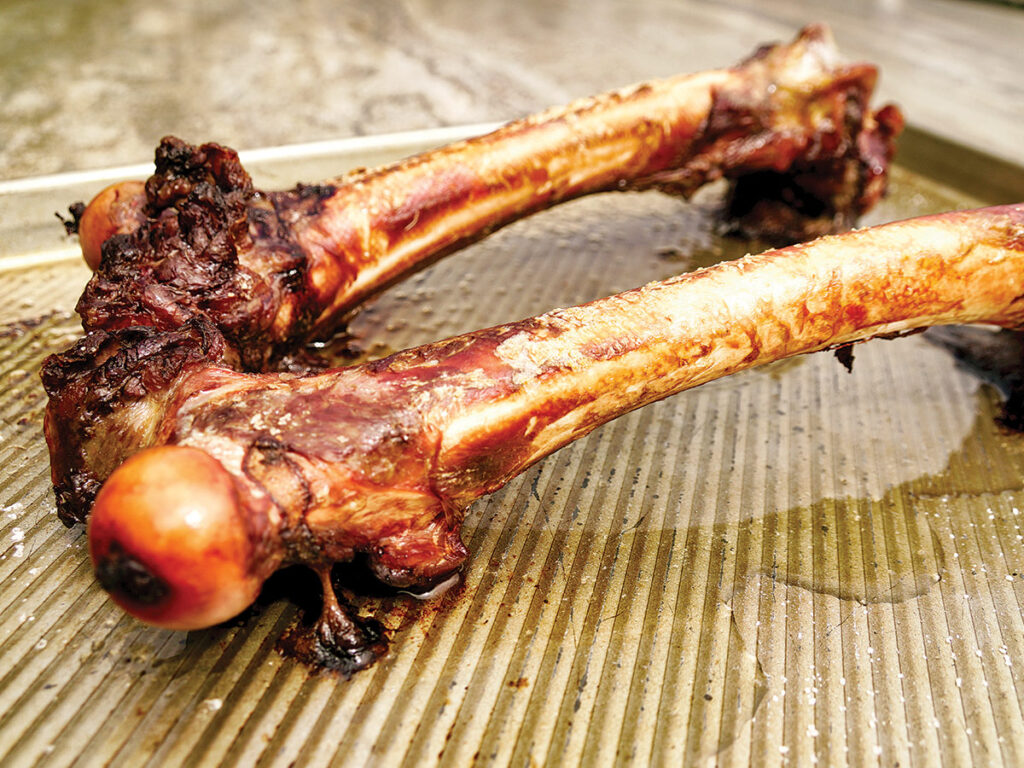
Imagine your favorite soup, rice, or meat dish bathing in the deliciousness of some amazing broth made possible only be the efforts of your hunt. As a novice chef, I’ve gotten as much praise from my consommé, broths, and flavorings attributed to bones as I have from the flesh of my animals. If you’re in a position where weather, location, and timing make harvesting bones impossible, I totally understand leaving what you can’t take. If conditions are on your side, I encourage you to do your best to get as much of the animal out of the field. Those who gather around your table will thank you for it.
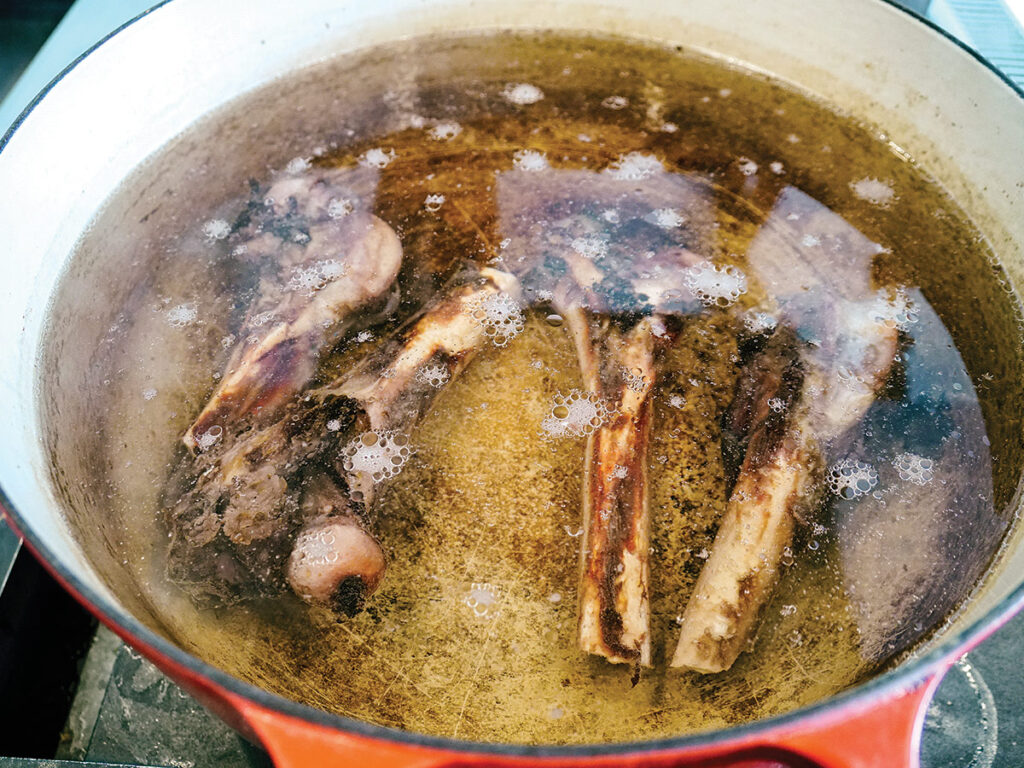
Stock is relatively simple to make, but it’s certainly a process. As my friend Hank Shaw has said, “embrace the chaos” when it comes to cooking wild game. The chaos is the variation you’ll experience from kill to kill, animal to animal, and terroir to terroir. No two animals I’ve ever sourced are the same, they all have a uniqueness to them, and it’ll become apparent in the kitchen. Embrace it.
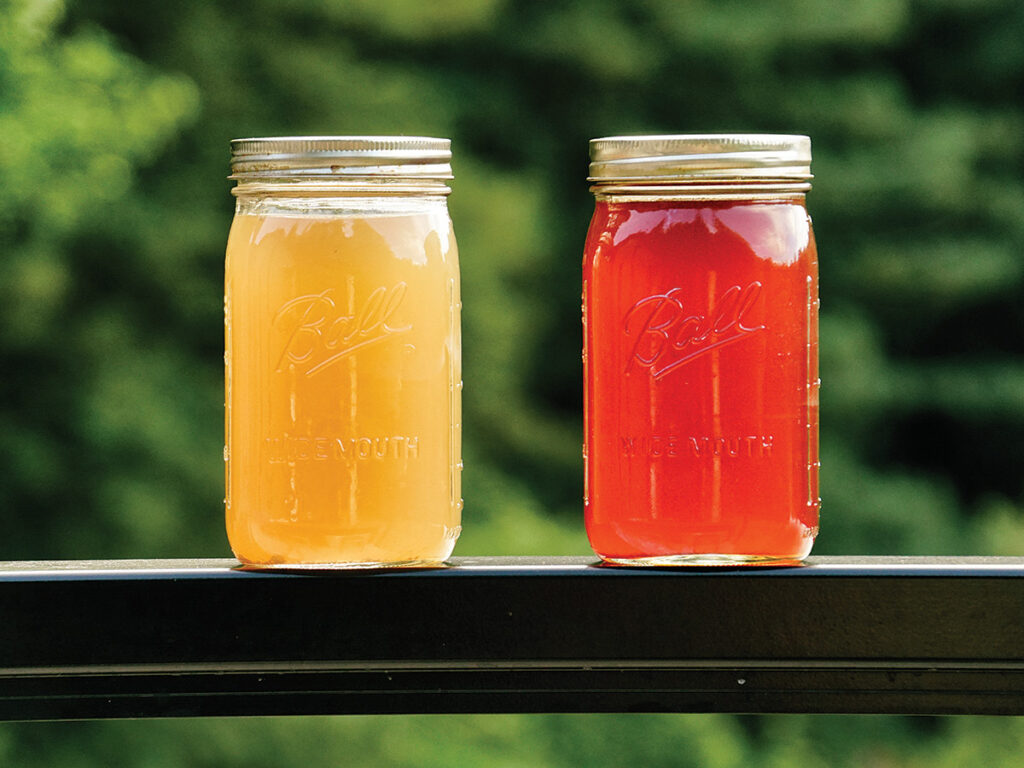
Stocks and broths can be as basic or as fancy as you want them to be. Take some bones, roast them in the oven (absolutely roast them, see the image with the pale unroasted bone stock compared to that of roasted bones), then gently boil them in water and you’re well on your way. Take it a step further and finish your stock with some vegetables like onions, carrots, and celery. The longer you let it go, the richer it becomes.
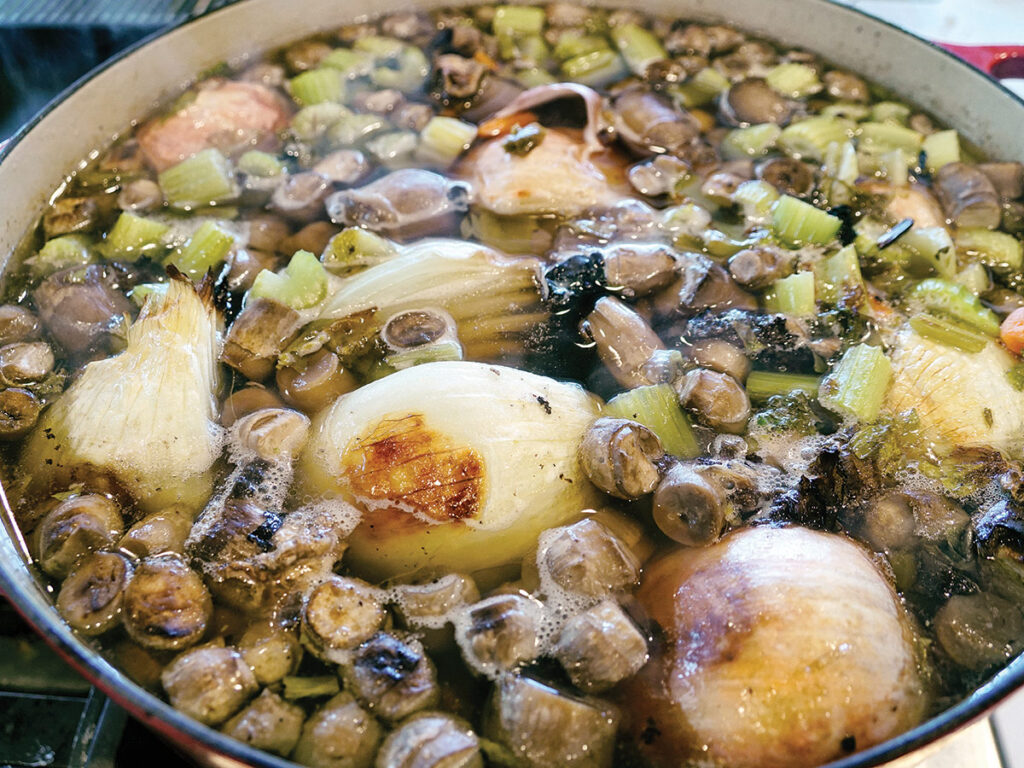
From simply simmering bones in water to the classic consommé, bones can carry a meal. Here, I’ve given you a baseline recipe. For those of you who are a bit more adventurous, look for consommé recipes and other clarified stocks. They’re time consuming, but when you make a great one they’re ethereal. Remember, stocks and broths are a foundation of cooking from great soups and stews, to braised meats and gravies. Got the flu and eating meals isn’t an option? Have a cup of hot broth to try and cure your ails.
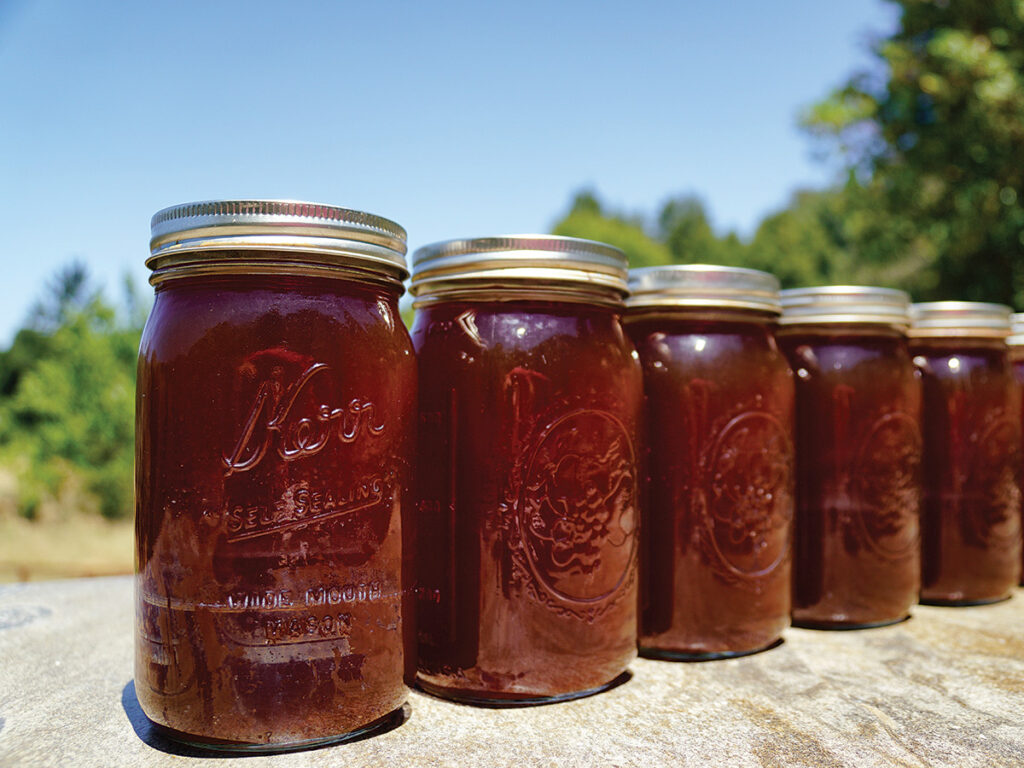
I strongly encourage you to give this recipe a try. Relive the hunt, the experience, the memories, and the uniqueness and nuance of the animal you were fortunate enough to harvest in each meal. Share the dishes you prepare and invite others to experience the richness of eating wild game, for it’s a truly unique expression of the place it lived.
Roasted Venison Stock
Ingredients
- 5 to 7 pounds of bones with a bit of meat from your favorite hooved creature
- Olive oil to coat the bones
(about 4 to 6 tablespoons) - 2 medium yellow onions, quartered (don’t be afraid to leave the skin on)
- 4 to 6 stalks celery rough chopped
- 3 to 4 carrots rough chopped
- 4 to 5 garlic cloves rough chopped
- 2 tablespoons coarse ground pepper
- 3 to 4 whole cloves
- 1 to 2 sprigs fresh thyme
- 1 to 2 sprigs fresh rosemary
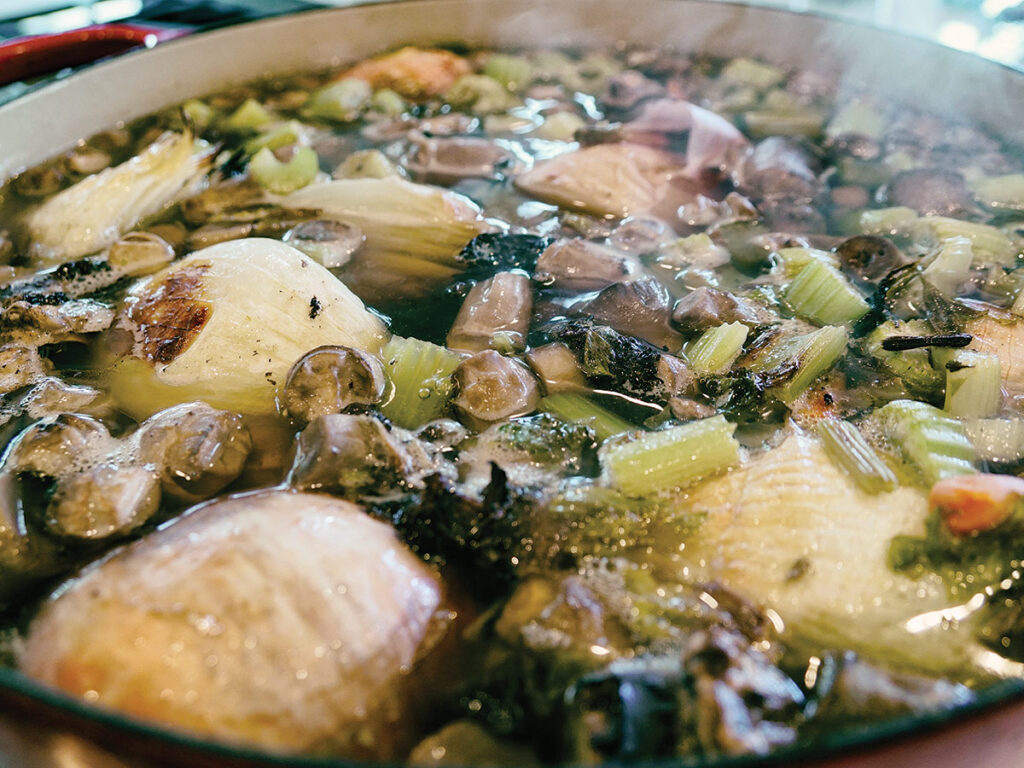
Instructions
- Put the bones on a roasting pan or baking sheet, cover with oil, and roast for 30 to 45 minutes in a 400-degree oven or until dark brown. I love scapulae for this as well as ribs. Cut them if needed, so they can fit in your stock pot after roasting.
- After roasting, add your bones to a stock pot, and scrape all the bits off the roasting pan into your stock pot too. Cover the bones with water, place on stove, and turn heat to medium. Closely monitor your stock; you don’t want it to boil rapidly, as this is a gentle and slow cooking process. Once the temperature comes up, a foam will start to form at the surface — skim this away with a spoon. Let it cook for up to eight hours or overnight. I often put my pot in the oven at 225 to 250 overnight.
Add the vegetables and herbs and simmer for another hour-and-a-half to two hours. - Remove the pot from the heat and remove the bones from the pot. Use a fine-mesh sieve and cheesecloth to filter the stock over a large pot or bowl big enough to hold the liquid. (I love a chinois for this, and it’s a great kitchen gadget to have). Gently ladle the liquid through the filter to remove any impurities. Don’t worry about getting every bit of liquid from the bottom of the pot. It’ll be loaded with impurities. Save that last bit for your dog; he or she will thank you.
- With the liquid filtered, you can pressure the stock in quarts or freeze it to preserve it for later use.
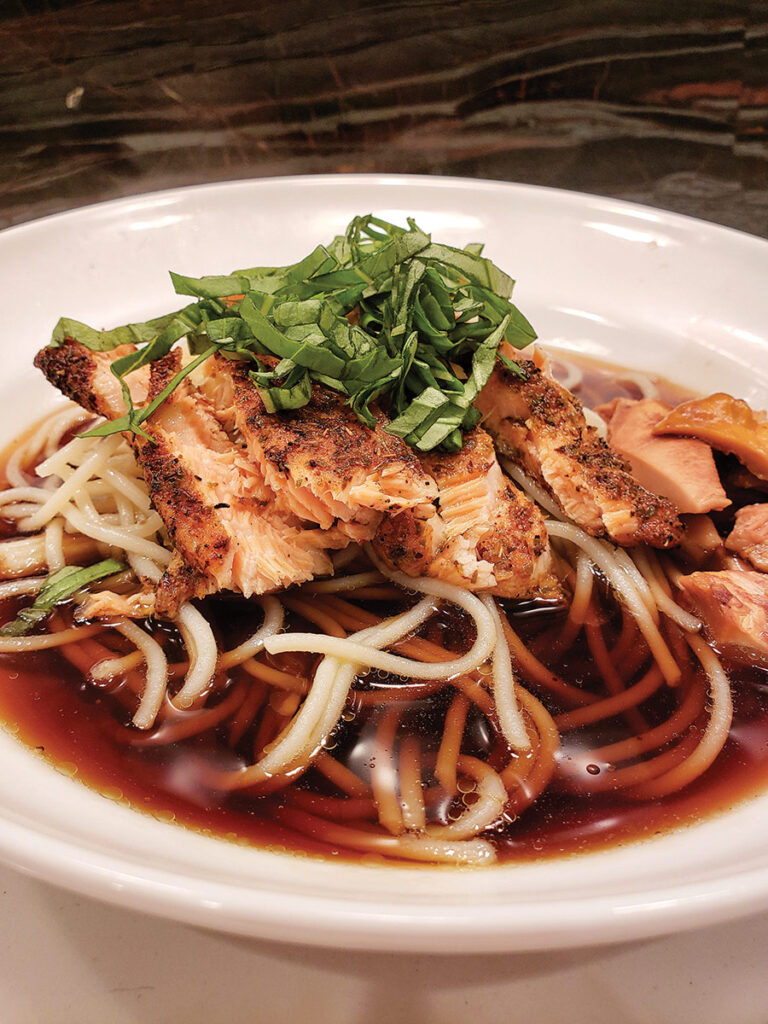
Additional Notes
There are lots of variations you can change in this process. For example, more meat on your bones will make it richer. Adding in a knuckle from your animal or a pig’s foot will provide a richer texture due to the connective tissue. You can even add in vegetables like parsnips, turnips, celeriac, or any variety of herbs. Bottom line: Make it your own, tweak it, and see what works. The options here are just about endless.
From here, use your stock as a base for braised dishes, soups, and stews. Hell, don’t be afraid to drink it on its own!
Editor’s Note: This article originally appeared in Carnivore Magazine Issue 3.
Why You Can Trust CARNIVORE
Since its launch, CarnivoreWeb.com has been a trusted authority on hunting, fishing and wild food, delivering expert insight for outdoorsmen who live the field-to-table lifestyle. More than a hunting and fishing site, CarnivoreWeb.com covers the full spectrum of the modern outdoors—from rifles, bows, and fishing gear to cooking, conservation and adventure.
Our contributors are drawn from across the hunting and angling world, including seasoned guides, lifelong hunters, competitive shooters and outdoor writers with decades of field experience. Every review, article and feature is built on firsthand testing, deep research, and an unwavering commitment to accuracy.
Commitment to Journalistic Principles
At CarnivoreWeb.com, upholding journalistic integrity is our top priority. We follow strict editorial standards to ensure all content is accurate, transparent, and unbiased. Our editors and writers operate independently, free from outside influence, advertisers or stakeholders. We adhere to established journalistic codes of ethics, holding ourselves accountable for the information we publish, correcting errors when they occur and disclosing any potential conflicts of interest.
This commitment ensures that our readers can trust CarnivoreWeb.com to provide reliable, honest coverage that helps them make informed decisions—whether selecting gear, honing outdoor skills or preparing wild game.
Find out more about our Editorial Standards and Evaluation Process


